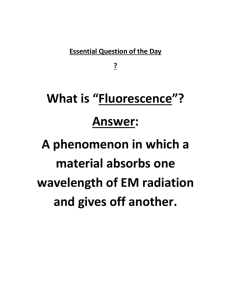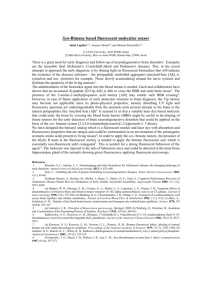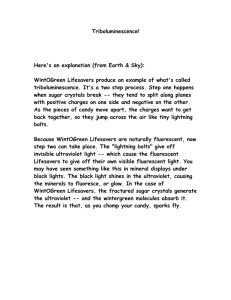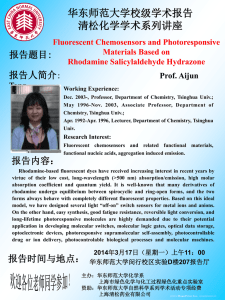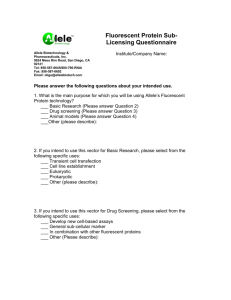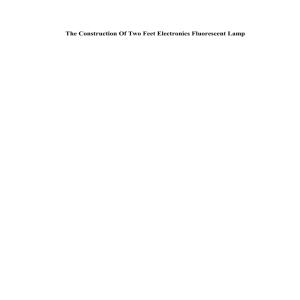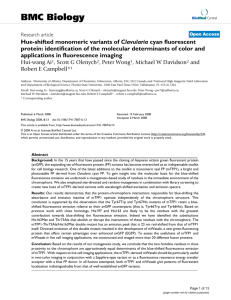Grade 10 Academic Science – Optics
advertisement
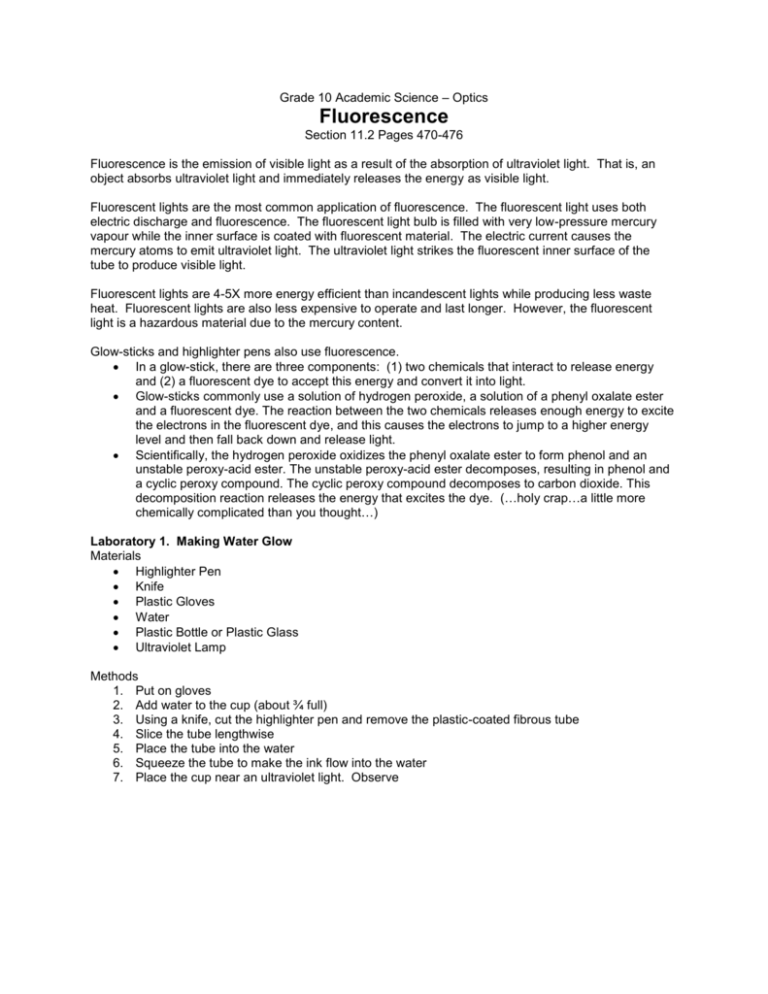
Grade 10 Academic Science – Optics Fluorescence Section 11.2 Pages 470-476 Fluorescence is the emission of visible light as a result of the absorption of ultraviolet light. That is, an object absorbs ultraviolet light and immediately releases the energy as visible light. Fluorescent lights are the most common application of fluorescence. The fluorescent light uses both electric discharge and fluorescence. The fluorescent light bulb is filled with very low-pressure mercury vapour while the inner surface is coated with fluorescent material. The electric current causes the mercury atoms to emit ultraviolet light. The ultraviolet light strikes the fluorescent inner surface of the tube to produce visible light. Fluorescent lights are 4-5X more energy efficient than incandescent lights while producing less waste heat. Fluorescent lights are also less expensive to operate and last longer. However, the fluorescent light is a hazardous material due to the mercury content. Glow-sticks and highlighter pens also use fluorescence. In a glow-stick, there are three components: (1) two chemicals that interact to release energy and (2) a fluorescent dye to accept this energy and convert it into light. Glow-sticks commonly use a solution of hydrogen peroxide, a solution of a phenyl oxalate ester and a fluorescent dye. The reaction between the two chemicals releases enough energy to excite the electrons in the fluorescent dye, and this causes the electrons to jump to a higher energy level and then fall back down and release light. Scientifically, the hydrogen peroxide oxidizes the phenyl oxalate ester to form phenol and an unstable peroxy-acid ester. The unstable peroxy-acid ester decomposes, resulting in phenol and a cyclic peroxy compound. The cyclic peroxy compound decomposes to carbon dioxide. This decomposition reaction releases the energy that excites the dye. (…holy crap…a little more chemically complicated than you thought…) Laboratory 1. Making Water Glow Materials Highlighter Pen Knife Plastic Gloves Water Plastic Bottle or Plastic Glass Ultraviolet Lamp Methods 1. Put on gloves 2. Add water to the cup (about ¾ full) 3. Using a knife, cut the highlighter pen and remove the plastic-coated fibrous tube 4. Slice the tube lengthwise 5. Place the tube into the water 6. Squeeze the tube to make the ink flow into the water 7. Place the cup near an ultraviolet light. Observe Laboratory 2. Mountain Dew Glow Materials 1 Glow-stick 2 drops of Dishwashing Liquid Knife Plastic Gloves Small amount of Mountain Dew 1.5 g Baking Soda 2 caps of Hydrogen Peroxide Solution Methods 1. Put on gloves 2. Pour out most of Mountain Dew 3. With knife, cut open the Glow-stick and add the contents to the bottle 4. Add dishwashing liquid 5. Add a few caps of Hydrogen Peroxide 6. Add Baking Soda 7. Shake 8. Dim lights in the room and observe.

